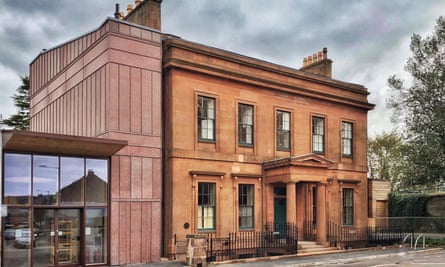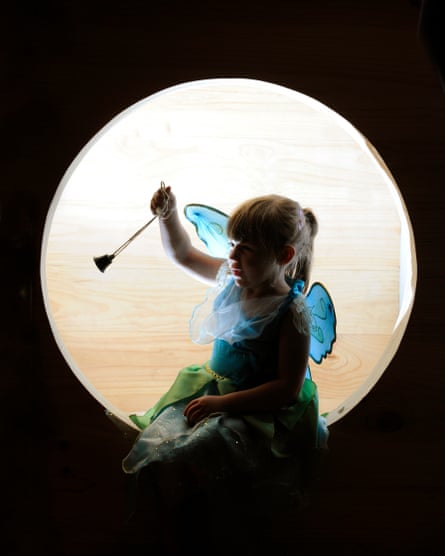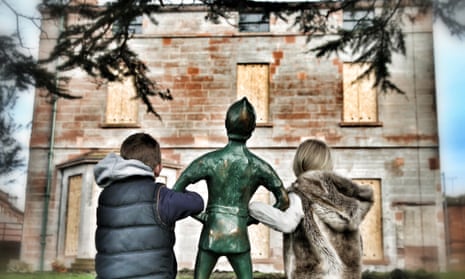A Georgian villa and terraced gardens in Dumfries where the author JM Barrie played as a child, and which later inspired his best-loved work Peter Pan, is reopening as Scotland’s first National Centre for Children’s Literature and Storytelling.
With a full-scale pirate ship, a mermaid lagoon and a Lost Boys’ treehouse, the modern-day Neverland at Moat Brae House is the result of an £8.5m, eight-year restoration project and the embodiment of a pledge to make storytelling an integral part of growing up in Scotland.
Barrie, who was born in Kirriemuir, near Dundee, in 1860, described the five years he spent attending Dumfries academy as some of the happiest of his life.

He became close friends with the brothers Stuart and Hal Gordon, who lived at nearby Moat Brae, and later described the sloping gardens on the banks of the River Nith with their cedars and rarely-flowering tulip tree as an “enchanted land [which] was certainly the genesis of that nefarious work [Peter Pan]”.
Built in 1832, Moat Brae, which reopens on Saturday, had fallen into disrepair after becoming a hospital, then a nursing home, in the 20th century, and was just three days away from demolition when it was saved by a local trust in 2011.

Supported by the actor Joanna Lumley, who has a personal connection to the area, the Peter Pan Moat Brae trust first raised funds to repair and restore the existing building before financing modern extensions and the creation of an adventure garden with the support of the National Lottery Heritage Fund, Creative Scotland and Historic Environment Scotland, alongside the Scottish government and Dumfries and Galloway council.
Throughout the three-storey house, from the mosaic entrance hall to the airy central cupola, interactive exhibits sit comfortably with children’s toys of the time, like a spinning zoetrope, as well as the original Tinker Bell, a small bell that Barrie bought to be rung whenever his fairy character appeared in the original stage version of the story.

There is an attic recreation of the Darling children’s nursery, where visitors can attempt to catch Peter Pan’s shadow, or crawl through Nana’s kennel into a play theatre furnished with flamboyant dressing-up props.
Most importantly, there are a seemingly infinite number of comfy corners to sit and read one of the thousands of books that will be on offer. As well as their availability to ticketed visitors, the donated volumes – which range from Ladybird classics to the works of Michael Morpurgo – will soon form a free, out-of-hours community library for local children.

“We didn’t want an archive of books that nobody could touch,” says Simon Davidson, the director of the Moat Brae centre. “Our vision is very simple: a world where reading and storytelling are an integral part of growing up.”
Davidson said: “The national centre is about engaging young people and setting the national agenda for best practice in children’s literature, in terms of developing interest in reading, making it accessible to children of all ages, reaching children who are dyslexic, reluctant readers, those with additional support needs, as well as encouraging authors to improve the diversity of the sector.”
He said he was exploring new methods of immersive storytelling, using multi-sensory advances to bring books off the page. “The mechanism is not important. We want to find ways to engage children who can’t or who struggle to read, and there are multiple means of conveying a story.”
Moat Brae, the new National Centre for Children’s Literature and Storytelling, is open to public from 1 June in Dumfries.
